38 label the electromagnetic spectrum
PDF The Electromagnetic Spectrum - tumwater.k12.wa.us 9. Look carefully at the electromagnetic spectrum shown below paying attention to the wavelengths and frequencies indicated. The visible portion of the electromagnetic spectrum has been enlarged below the spectrum. Fill in the blanks with the correct colors from the visible spectrum according to their wavelength, frequency and energy. Electromagnetic Spectrum - Definition, Characteristics, Range, Diagram The electromagnetic spectrum is a range of frequencies, wavelengths and photon energies covering frequencies from below 1 hertz to above 10 25 Hz corresponding to wavelengths which are a few kilometres to a fraction of the size of an atomic nucleus in the spectrum of electromagnetic waves.
Electromagnetic_Spectrum - NAME_ HOUR_ The Electromagnetic... - Course Hero NAME_____ HOUR_____ The Electromagnetic Spectrum Label the parts of a wave using the terms: crest, trough, frequency, wavelength, amplitude 1. wavelength 2. trough 3. amplitude 4. crest 5. Frequency 6. Circle the appropriate words to describe the waves at the LEFT end of this wave spectrum a.

Label the electromagnetic spectrum
24.3: The Electromagnetic Spectrum - Physics LibreTexts The microwave and infrared regions of the electromagnetic spectrum overlap (Figure 24.3.1 ). Infrared radiation is generally produced by thermal motion and the vibration and rotation of atoms and molecules. Electronic transitions in atoms and molecules can also produce infrared radiation. PDF The Electromagnetic Spectrum - Harvard University The model of the electromagnetic spectrum pictured at the top of the previous page is used extensively in textbooks and on posters, and like all other models is contains ... Starting at 1 cm, label each interval with increasing powers of ten, from 101 to 1024. These numbers represent the frequency in Hertz of the electromagnetic spectrum. Use ... Answered: Label the regions of the… | bartleby Mulitple answers may be possible for some types of radiation. 700nm 400nm valence nuclear molecular bond valence electron core electron nuclear electron excitations rotation vibrations excitations excitations excitations excitations Radio waves Microwaves Infrared Visible light Ultraviolet X-гаys Gamma Wavelength (meters) T 101 102 10³ 104 105 1...
Label the electromagnetic spectrum. Solved Label the parts of the electromagnetic spectrum on - Chegg Longest wavelength Highest frequency Filtered out by the atmosphere A few wavelengths filtered out by the atmosphere Not filtered out by the atmosphere igure 21.26 The electromagnetic Spectrum. 400 600 500 Nasometers (540-1650 K ) (88-108 MH) RAM 109 108 107 101 101 1 0 10 w wwwwwwww Wavelength (m) (a) Common names for different parts of the spe... electromagnetic spectrum | Definition, Diagram, & Uses electromagnetic spectrum, the entire distribution of electromagnetic radiation according to frequency or wavelength. Although all electromagnetic waves travel at the speed of light in a vacuum, they do so at a wide range of frequencies, wavelengths, and photon energies. Electromagnetic Spectrum worksheet 2021 - - StuDocu The Electromagnetic Spectrum. Label the parts of a wave using the terms: crest, trough, frequency, wavelength, amplitude. wavelength__ trough_ _amplitude _____ crest___ ____frequency. Circle the appropriate words to describe the waves at the LEFT end of this wave spectrum. a. Long / Short wavelength b. High / Low frequency c. High / Low energy The 7 Major Regions of the Electromagnetic Spectrum This part of the spectrum is defined as the range of light frequencies to which the human eye is most sensitive. Visible light spans from about 760 to 380 nanometers. At the low-frequency end, we...
Electromagnetic Spectrum Diagram - NASA The electromagnetic spectrum is comprised of all frequencies of electromagnetic radiation that propagate energy and travel through space in the form of waves. Longer wavelengths with lower frequencies make up the radio spectrum. Shorter wavelengths with higher frequencies make up the optical spectrum. The portion of the spectrum that we can see ... Solved Label the regions of the electromagnetic spectrum | Chegg.com Mulitple answers may be possible for some types of radiation. 700nm 400nm MMANN molecular rotation molecular rotation bond vibrations valence electron excitations core electron excitations core electron excitations valence electron excitations Visible light care electron excitations Radio waves Microwaves Infrared X-rays Gamma Wavelength (meters... The Electromagnetic Spectrum | Physics - Lumen Learning As noted before, an electromagnetic wave has a frequency and a wavelength associated with it and travels at the speed of light, or c. The relationship among these wave characteristics can be described by vW = fλ, where vW is the propagation speed of the wave, f is the frequency, and λ is the wavelength. label the electromagnetic spectrum worksheet science spectrum electromagnetic diagram label light printable blank fill teaching conductors fun grade physics insulators activities resources lessons middle handout. 14 Best Images Of Sound Waves Worksheet Labeling - Labeling Waves .
Draw a Chart of the Electromagnetic Spectrum Covering 100 Kilohertz ... Draw a chart of the electromagnetic spectrum covering 100 kilohertz (kHz) to 1000 megahertz (MHz). Label the MF, HF, VHF, UHF, and microwave portions of the spectrum on your diagram. Locate on your chart at least eight radio services such as AM and FM commercial broadcast, CB, television, amateur radio (at least four ham radio bands), and police. PDF The Electromagnetic Spectrum - Weebly The Electromagnetic Spectrum Label the parts of a wave using the terms: crest, trough, frequency, wavelength, amplitude 1. _____ 2. ... The visible portion of the electromagnetic spectrum has been enlarged below the spectrum. Fill in the blanks with the correct colors from the visible spectrum according to Parts of the electromagnetic spectrum - BBC Bitesize Waves in the electromagnetic spectrum can all travel through a vacuum at the speed of light. The wide range of frequencies and wavelengths of different waves have a variety of uses. The Electromagnetic Spectrum Show Labels Credits Introduction. What is the electromagnetic spectrum - Video. Science Mission Directorate. "Introduction to the Electromagnetic Spectrum" NASA Science website, 2010. National Aeronautics and Space Administration. Everday Impacts. Radio - Image.
Introduction to the Electromagnetic Spectrum - Science Electromagnetic energy travels in waves and spans a broad spectrum from very long radio waves to very short gamma rays. The human eye can only detect only a small portion of this spectrum called visible light. A radio detects a different portion of the spectrum, and an x-ray machine uses yet another portion.
Electromagnetic Spectrum | NASA The electromagnetic spectrum is comprised of all frequencies of electromagnetic radiation that propagate energy and travel through space in the form of waves. Longer wavelengths with lower frequencies make up the radio spectrum. Shorter wavelengths with higher frequencies make up the optical spectrum. The portion of the spectrum that we can see ...
Radiation Studies - CDC: The Electromagnetic Spectrum Radiation — energy moving in the form of particles or waves. Familiar radiations are heat, light, radio waves, and microwaves. Ionizing radiation is a very high-energy form of electromagnetic radiation. Wavelength - Distance covered by one complete cycle of the electromagnetic wave. In other words, the distance from one peak to another peak ...
Electromagnetic Spectrum - NASA The electromagnetic spectrum can be expressed in terms of energy, wavelength or frequency. Each way of thinking about the EM spectrum is related to the others in a precise mathematical way. Scientists represent wavelength and frequency by the Greek letters lambda (λ) and nu (ν).
Draw and label the electromagnetic spectrum. Diagram | Quizlet Only $2.99/month Draw and label the electromagnetic spectrum. STUDY Learn Write Test PLAY Match Created by ChienLynn Part of the Science 8 Semester 2 Study Guide Terms in this set (8) Wavelength Frequency Radio waves Infrared rays Visible light Ultraviolet rays X-rays Gamma rays THIS SET IS OFTEN IN FOLDERS WITH... Science 8 Semester 2 Study Guide
PDF Unit 2 the Electromagnetic Spectrum - Nasa other. It is called the electromagnetic spectrum because this radiation is associat- ed with electric and magnetic fields that transfer energy as they travel through space. Because humans can see it, the most familiar part of the electromagnetic spectrum is visible light—red, orange, yellow, green, blue, and violet.
Electromagnetic spectrum - Wikipedia The electromagnetic spectrum is the range of frequencies (the spectrum) of electromagnetic radiation and their respective wavelengths and photon energies.. The electromagnetic spectrum covers electromagnetic waves with frequencies ranging from below one hertz to above 10 25 hertz, corresponding to wavelengths from thousands of kilometers down to a fraction of the size of an atomic nucleus.
Label the Electromagnetic Spectrum - Labelled diagram - Wordwall Label the Electromagnetic Spectrum. Share Share by Elizabetheck. G6 G7 G8 Science. Show More. Like. Edit Content. Embed. More. Leaderboard. Show more Show less . This leaderboard is currently private. Click Share to make it public. This leaderboard has been disabled by the resource owner. This leaderboard is disabled as your options are ...

Draw and label the diagram showing various regions of Electro - magnetic spectrum and their wavelength ranges.
Electromagnetic Spectrum Diagram - My NASA Data The electromagnetic spectrum is comprised of all frequencies of electromagnetic radiation that propagate energy and travel through space in the form of waves. Longer wavelengths with lower frequencies make up the radio spectrum. Shorter wavelengths with higher frequencies make up the optical spectrum.
Label the Electromagnetic Spectrum - Labelled diagram - Wordwall Label the Electromagnetic Spectrum - Labelled diagram Radio, Microwave, Infrared, Visible Light, Gamma Rays, Ultra Violet, X Rays, Low frequency, High frequency, Low energy, High energy, Long wavelength, Short wavelength. Label the Electromagnetic Spectrum Share by Shaheera Like Edit Content More Leaderboard Switch template
Electromagnetic Spectrum - Introduction - NASA Radio waves, gamma-rays, visible light, and all the other parts of the electromagnetic spectrum are electromagnetic radiation. Electromagnetic radiation can be described in terms of a stream of mass-less particles, called photons, each traveling in a wave-like pattern at the speed of light. Each photon contains a certain amount of energy.
Answered: Label the regions of the… | bartleby Mulitple answers may be possible for some types of radiation. 700nm 400nm valence nuclear molecular bond valence electron core electron nuclear electron excitations rotation vibrations excitations excitations excitations excitations Radio waves Microwaves Infrared Visible light Ultraviolet X-гаys Gamma Wavelength (meters) T 101 102 10³ 104 105 1...
PDF The Electromagnetic Spectrum - Harvard University The model of the electromagnetic spectrum pictured at the top of the previous page is used extensively in textbooks and on posters, and like all other models is contains ... Starting at 1 cm, label each interval with increasing powers of ten, from 101 to 1024. These numbers represent the frequency in Hertz of the electromagnetic spectrum. Use ...
24.3: The Electromagnetic Spectrum - Physics LibreTexts The microwave and infrared regions of the electromagnetic spectrum overlap (Figure 24.3.1 ). Infrared radiation is generally produced by thermal motion and the vibration and rotation of atoms and molecules. Electronic transitions in atoms and molecules can also produce infrared radiation.




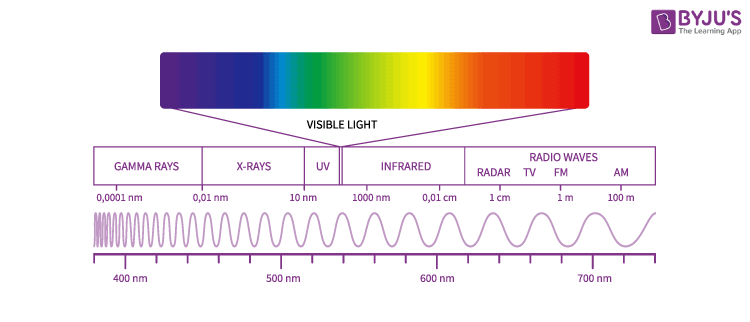
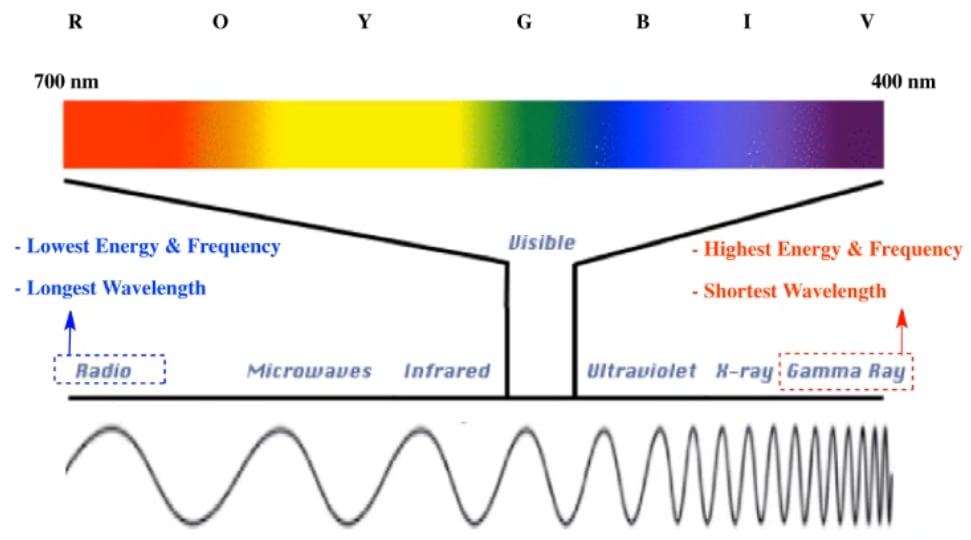
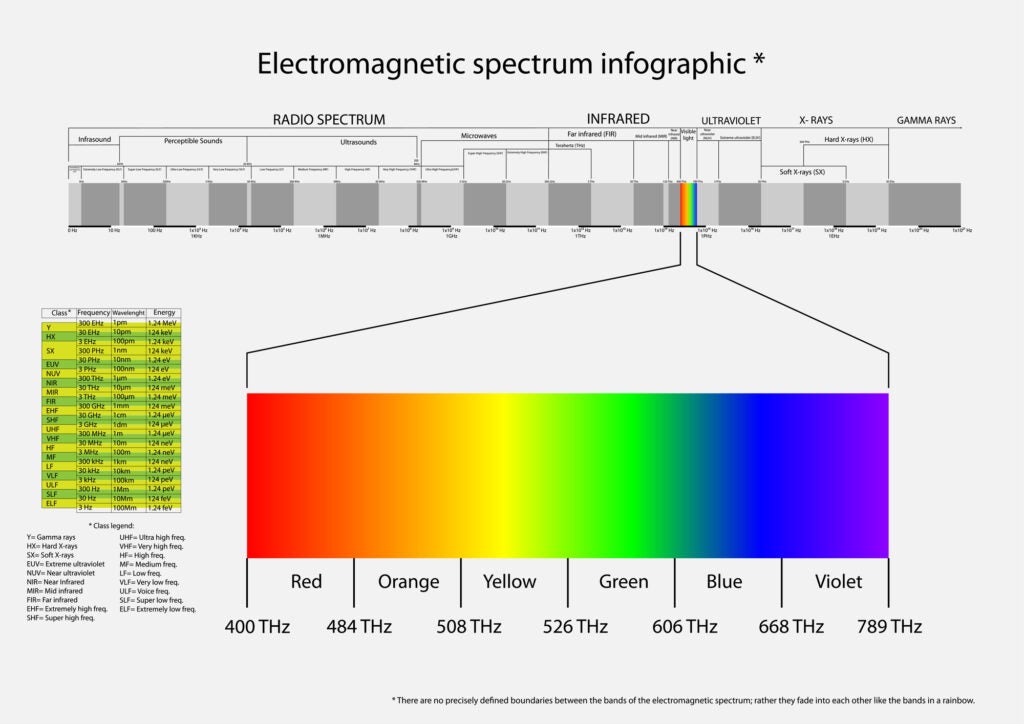
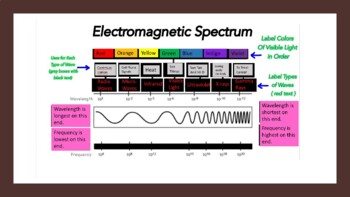

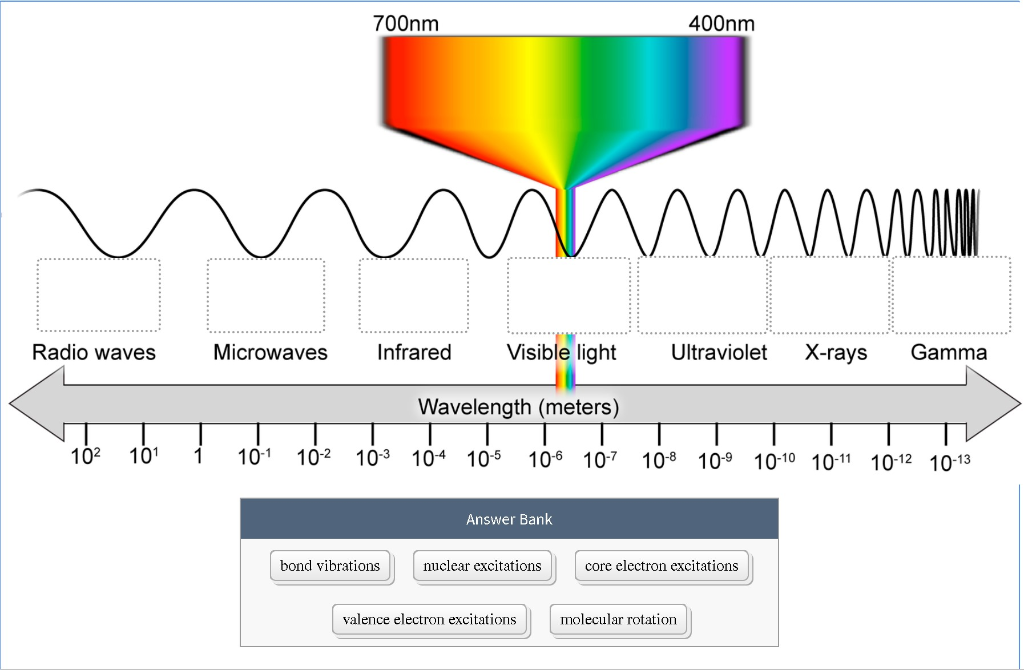


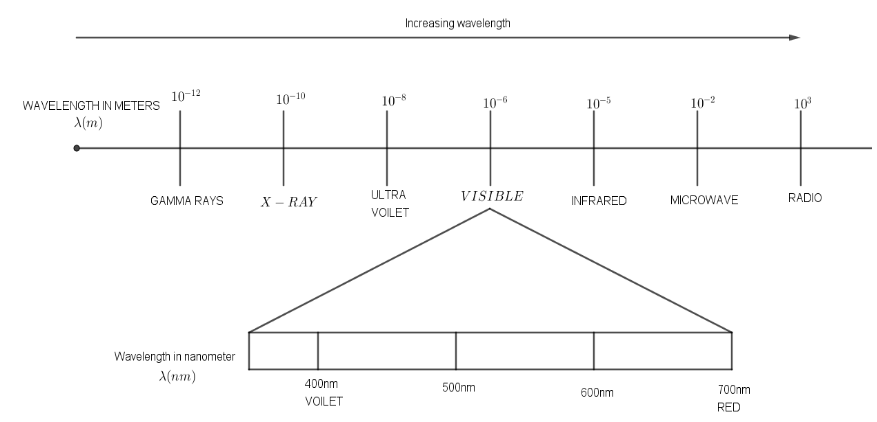


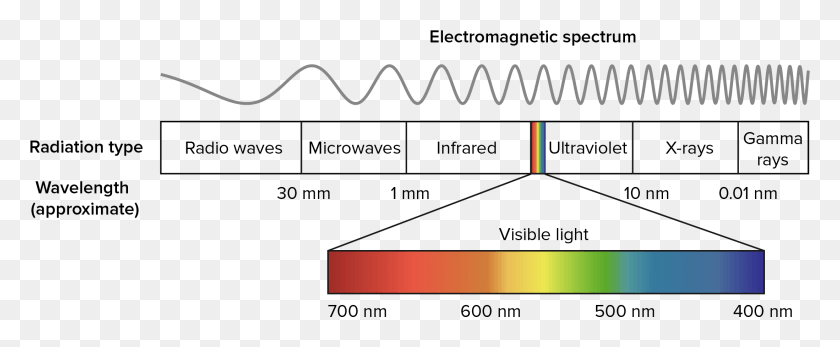

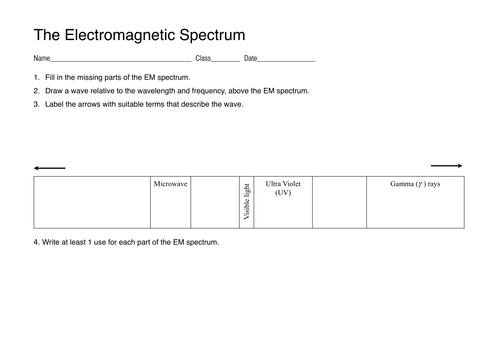

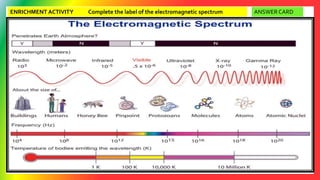







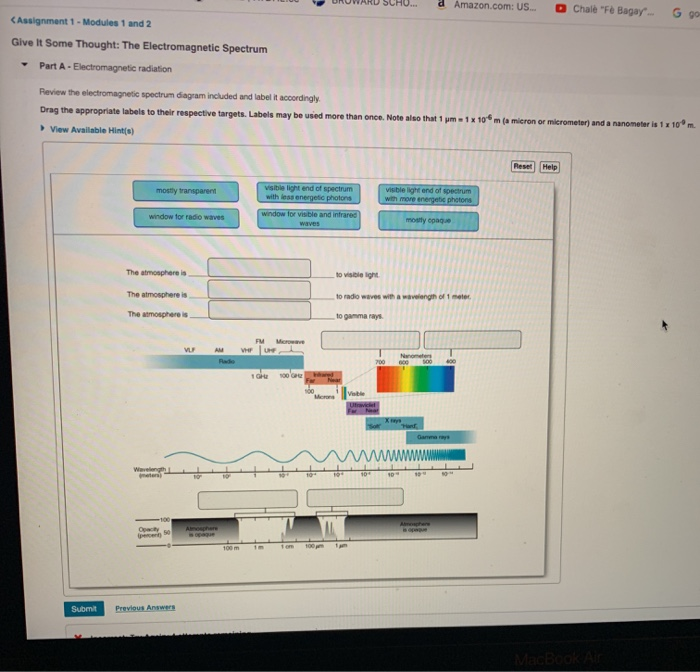

Post a Comment for "38 label the electromagnetic spectrum"